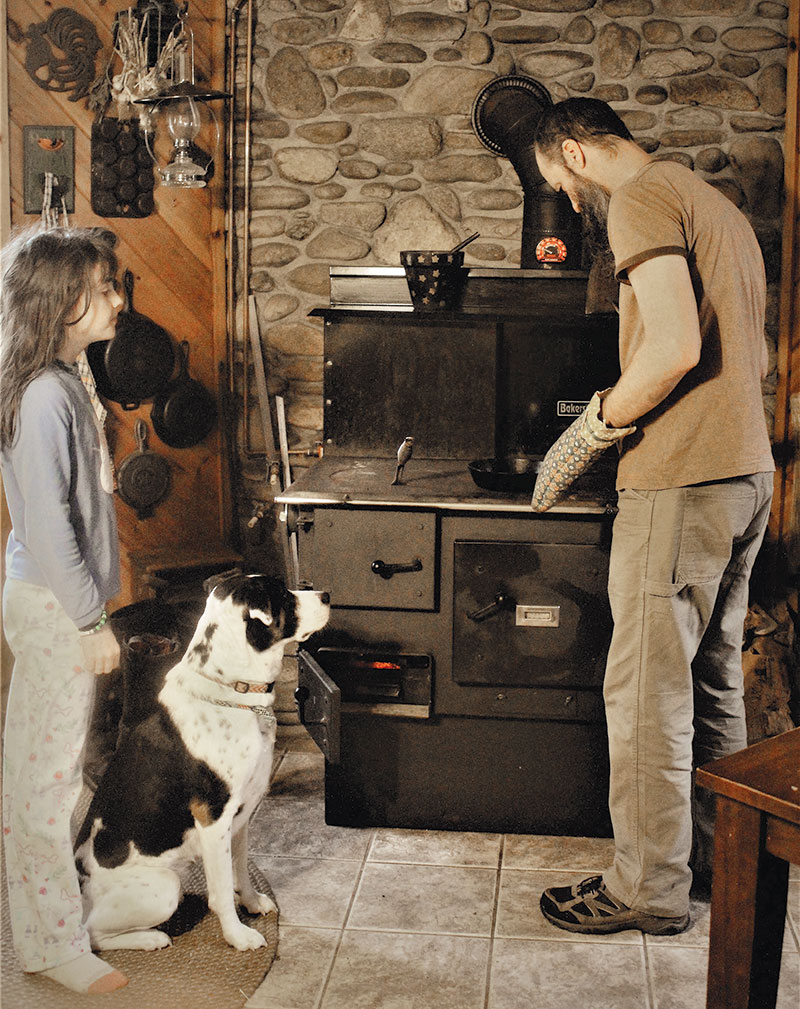
Before disconnecting from the power grid in 2006, Jaime Cool, her husband, Robert, and their daughter, Norah, gradually reduced their energy consumption to make sure they were ready to pull the plug. When their usage dropped to less than 2,000 watts—the load of their solar power system—the family went off the grid for good.
Rather than building a new home, the Cools took their existing home in Caldwell County, North Carolina, off the grid, trading their conventional power supply for solar power and a woodstove for heat. Although they eschew modern conveniences such as a dishwasher and clothes dryer, Cool says, “We’re not hauling water or living by candlelight, but we do have to watch our consumption.”

Cool grows fresh produce in three large gardens, raises 16 laying hens, 25 meat birds and two pigs per year; the couple also tends 50 beehives. The homestead is a full-time job for Cool. She sells honey, handmade soap and candles under the Bee Kind Family Farm label at two local farmers market and through an Etsy shop.

Gradual Changes
There wasn’t a pivotal moment when the Cools decided to live off the grid. Instead, it happened after a series of small changes they made with the environment in mind.
“We had a vision of living close to the Earth and reducing our footprint as much as possible,” Cool says. “We like having a small carbon footprint and not depending on others for our food or power.”
Cool takes great pride in her self-sufficient lifestyle but confesses that annual trips to the beach (where the family rents a condo) make her realize how difficult it can be to live off the grid.
Wood You Try It?
Maintaining the wood supply is a year-round job. In the winter, Cool often suffers through frigid mornings waiting for the fire to take the chill out of the air. She is also at the mercy of Mother Nature to check items off her to-do list: There isn’t enough solar power to run the washing machine when it rains and, without a dryer, she needs a sunny day to hang the laundry out to dry.
“When you start out, you want to see if you can do it without any fossil fuels, but we realized we had to make some exceptions, [and] as I get older, I feel myself getting less hardcore,” she says.

The couple purchased a splitter so they could more easily stock the woodpile. They’re also considering a propane backup for their woodstove to heat the house on cold nights. Despite embracing some creature comforts, Cool has no plans to move to town, crank up a central heating unit and start purchasing all of her produce at the supermarket.
“Sometimes we take on too much, and we have to remember to slow down and enjoy it,” she says. “As much work as it is, it’s also extremely rewarding. It’s a good life that not many people get to experience, and I feel really lucky that we have the opportunity.”
This article appeared in Living Off the Grid, a 2018 specialty publication produced by the editors and writers of Hobby Farms magazine. Aside from this piece on permaculture, Living Off the Grid includes stories on renewable energy, growing plants without seeds and long-term produce storage. You can purchase this volume, Hobby Farms back issues as well as special editions such as Best of Hobby Farms and Best of Urban Farm by following this link.




